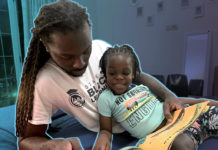If your emotional abilities aren’t in hand, if you don’t have self-awareness, if you are not able to manage your distressing emotions, if you can’t have empathy and have effective relationships, then no matter how smart you are, you are not going to get very far. -Daniel Goleman
Creating conditions that generate healthy and successful outcomes for our society will require meeting the social and emotional needs of the most vulnerable among us.
Children of color are particularly vulnerable to poor mental health outcomes because of social inequalities stemming from structural racism. Examples of such social inequalities are poverty, segregated neighborhoods resulting from this country’s history of racist housing practices, discrimination, unequal access to key educational resources, parental unemployment, violent neighborhoods, inadequate housing, and lack of transportation.
These inequalities coupled with a stigma around mental health discussions, misinformation about mental health and often exclusively relying on faith and spirituality rather than honest conversations and seeking help from mental health professionals, collectively contribute to poor mental health outcomes for children of color.
Data from the Institute of Women and Ethnic studies reveal youth of color in New Orleans suffer from PTSD four times the national average, that 53% have experienced the murder of someone close to them, and that 18% have actually witnessed a murder. Children of color and children living in poverty are more likely to have experienced three or more traumatic events referred to as adverse childhood experiences (ACE’s).
ACE’s can cause toxic stress which threatens the healthy development of the brains and bodies of children. Toxic stress can damage learning, behavior, and health across the lifespan. The effects of childhood trauma are so pervasive and enduring that it can result in reducing life expectancy by 20 years.
While it is important to acknowledge the severity of trauma and its impact on children, it is also important to note that the damage is not irreparable. Supportive, caring and emotionally responsive relationships between children and adults can serve as a buffer to the harmful effects of childhood trauma. However, for children of color, social inequalities often times disrupt a potential support system that could serve as a protective factor against the effects of childhood trauma and adverse childhood experiences.
In addition to social support, physical activity, therapy with a mental health practitioner, strengthening core life skills through social and emotional learning in schools and yoga/meditation/mindfulness are all ways to increase resilience in the face of childhood trauma.
Comprehensively addressing the social and emotional needs of children of color will require a concerted effort among policymakers, school-based mental health professionals, educators, parents/caretakers, and the community-at-large. As we continue to chart this emerging course towards trauma-informed cities, trauma-informed schools and general trauma-informed approaches, systemic integration of social and emotional learning in schools will be particularly important in effectively meeting the needs of children of color who live in poverty.
Social and emotional learning interventions show great promise in addressing inequities in education, created by a longstanding history of discriminatory practices, poverty, and social injustice. These conditions generate poor well-being in communities of color and create barriers to obtaining successful outcomes. Promoting the development of social and emotional skills has the potential to serve as a buffer to such barriers. Expanding the emotional intelligence of children in schools and the school staff they interact with daily, through social and emotional learning, will increase the ability of young people to manage their emotions in the face of adversity throughout their lives.
Danielle K. Wright is the leader of Navigate Nola, a New Orleans nonprofit creating sustainable, positive youth development programming.










